Related Research Articles
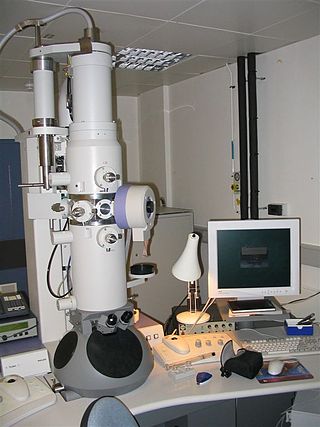
An electron microscope is a microscope that uses a beam of electrons as a source of illumination. They use electron optics that are analogous to the glass lenses of an optical light microscope to control the electron beam, for instance focusing them to produce magnified images or electron diffraction patterns. As the wavelength of an electron can be up to 100,000 times smaller than that of visible light, electron microscopes have a much higher resolution of about 0.1 nm, which compares to about 200 nm for light microscopes. Electron microscope may refer to:

A microscope is a laboratory instrument used to examine objects that are too small to be seen by the naked eye. Microscopy is the science of investigating small objects and structures using a microscope. Microscopic means being invisible to the eye unless aided by a microscope.
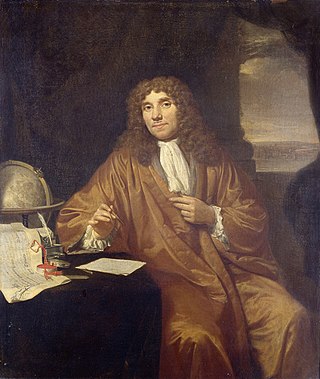
Antonie Philips van Leeuwenhoek was a Dutch microbiologist and microscopist in the Golden Age of Dutch science and technology. A largely self-taught man in science, he is commonly known as "the Father of Microbiology", and one of the first microscopists and microbiologists. Van Leeuwenhoek is best known for his pioneering work in microscopy and for his contributions toward the establishment of microbiology as a scientific discipline.

Timeline of microscope technology
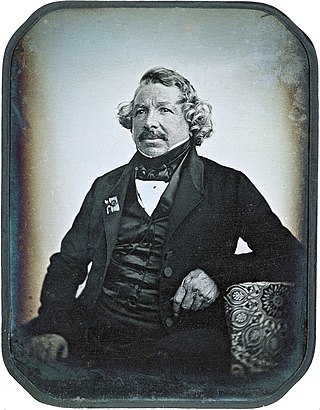
Daguerreotype was the first publicly available photographic process, widely used during the 1840s and 1860s. "Daguerreotype" also refers to an image created through this process.

The optical microscope, also referred to as a light microscope, is a type of microscope that commonly uses visible light and a system of lenses to generate magnified images of small objects. Optical microscopes are the oldest design of microscope and were possibly invented in their present compound form in the 17th century. Basic optical microscopes can be very simple, although many complex designs aim to improve resolution and sample contrast.

Louis Aimé Augustin Le Prince was a French artist and the inventor of an early motion-picture camera, and director of Roundhay Garden Scene.

Cornelis Jacobszoon Drebbel was a Dutch engineer and inventor. He was the builder of the first operational submarine in 1620 and an innovator who contributed to the development of measurement and control systems, optics and chemistry.

Joseph Petzval was a mathematician, inventor, and physicist best known for his work in optics. He was born in the town of Szepesbéla in the Kingdom of Hungary.

Confocal microscopy, most frequently confocal laser scanning microscopy (CLSM) or laser scanning confocal microscopy (LSCM), is an optical imaging technique for increasing optical resolution and contrast of a micrograph by means of using a spatial pinhole to block out-of-focus light in image formation. Capturing multiple two-dimensional images at different depths in a sample enables the reconstruction of three-dimensional structures within an object. This technique is used extensively in the scientific and industrial communities and typical applications are in life sciences, semiconductor inspection and materials science.
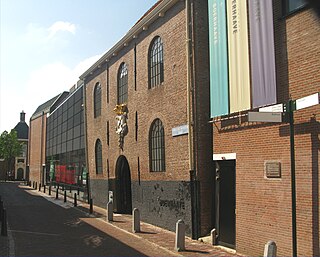
Rijksmuseum Boerhaave is a museum of the history of science and medicine, based in Leiden, Netherlands. The museum hosts a collection of historical scientific instruments from all disciplines, but mainly from medicine, physics, and astronomy.
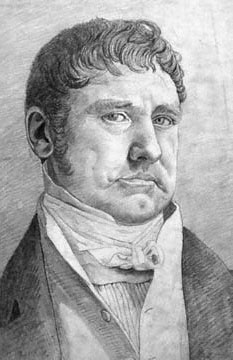
Cornelius Varley, FRSA was a British water-colour painter and optical instrument-maker. He invented the graphic telescope and the graphic microscope.

The Royal Microscopical Society (RMS) is a learned society for the promotion of microscopy. It was founded in 1839 as the Microscopical Society of London making it the oldest organisation of its kind in the world. In 1866, the society gained its royal charter and took its current name. Founded as a society of amateurs, its membership consists of individuals of all skill levels in numerous related fields from throughout the world. Every year since 1841, the society has published its own scientific journal, the Journal of Microscopy, which contains peer-reviewed papers and book reviews. The society is a registered charity that is dedicated to advancing science, developing careers and supporting wider understanding of science and microscopy through its Outreach activities.

The stereo, stereoscopic or dissecting microscope is an optical microscope variant designed for low magnification observation of a sample, typically using light reflected from the surface of an object rather than transmitted through it. The instrument uses two separate optical paths with two objectives and eyepieces to provide slightly different viewing angles to the left and right eyes. This arrangement produces a three-dimensional visualization of the sample being examined. Stereomicroscopy overlaps macrophotography for recording and examining solid samples with complex surface topography, where a three-dimensional view is needed for analyzing the detail.

A condenser is an optical lens that renders a divergent light beam from a point light source into a parallel or converging beam to illuminate an object to be imaged.
The French firm Susse Frères manufactured a daguerreotype camera which was one of the first two photographic cameras ever sold to the public. The company was also engaged in the foundry business and owned a large foundry in Paris.
Émile Bertrand (1844–1909) was a French mineralogist, in honour of whom bertrandite was named by Alexis Damour. He also gave his name to the Bertrand lens or phase telescope.
Andrew Pritchard FRSE was an English naturalist and natural history dealer who made significant improvements to microscopy and studied microscopic organisms. His belief that God and nature were one led him to the Unitarians, a religious movement to which he and his family devoted much energy. He became a leading member of Newington Green Unitarian Church in north London, and worked to build a school there.

Noël Marie Paymal Lerebours was a French optician and daguerreotypist. He is best known today for his Excursions Daguerriennes, books of views of the world's monuments, based on early photographs redrawn by hand as Aquatint engravings.

Charles A. Spencer was an American scientific pioneer and inventor, who is widely believed to have developed the first American-made achromatic objective microscope. He was born in 1813 in Madison County, NY and died in 1881.
References
- 1 2 3 4 5 "Vincent Chevalier – Who Knew Whom". culturalcartography.net.
- 1 2 "Vincent Chevalier | Biography". www.mutualart.com.
- 1 2 "When Was The Camera Invented?".
- ↑ "Molecular Expressions Microscopy Primer: Museum of Microscopy - Nineteenth Century Microscopes". micro.magnet.fsu.edu.